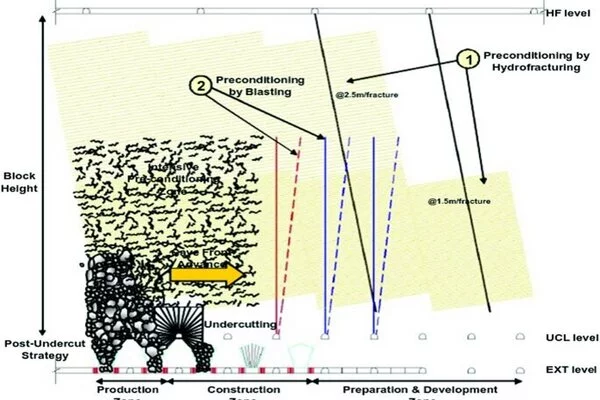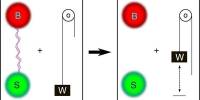The majority of earthquakes happen along plate boundary zones, where one tectonic plate collides with another. Because the large amount of relative motion between the plates must be taken up over a small area, these regions are responsible for frequent, and sometimes very large magnitude, earthquakes.
A new article examines the impact of hydraulic fracturing on seismic hazards such as micro-earthquakes, which is critical for worker safety and the continuation of mining operations. Because of the widespread use of hydraulic fracturing in mining, understanding its impact on mining extraction has become critical. We use the Sotolongo-Costa-Posadas model, which is based on Tsallis formalism, to assess the impact of HF on the magnitudes and interevent times of microearthquakes in a Chilean underground mine.
The analysis of low-intensity human-caused microearthquakes, including their magnitude and frequency, has become an important factor in mining. This is a consideration not only for the safety of mining staff, but also for extraction rates and mine stability that can have major impacts on business performance. Increasingly, the practice of hydraulic fracturing is used to precondition mines and diminish the magnitude of induced tremors as well as reduce the number of rock fragments extracted.
In terms of the next step in this investigation, our interest is to work with the problem when self-similarity is broken. Thus, taking into account the problem of multisources and relating them to multimodal distributions, this would imply evaluating possible seismic hazard modifications via hydraulic fracturing.
Vega-Jorquera
A new paper published in EPJ B assesses the impact of hydraulic fracturing on seismic hazards like microearthquakes, an important issue for the safety of workers and the continuation of mining operations. The paper is authored by Erick de la Barra, Pedro Vega-Jorquera and Héctor Torres from the University of La Serena, Chile, alongside Sérgio Luiz E. F. da Silva from Politecnico di Torino, Department of Applied Science and Technology, Turin, Italy.
Hydraulic fracturing is the process of pumping large amounts of fluids into a wellbore at high pressures. This causes the fractures in the target rock formation to grow larger. As a result, the yield of oil or gas from rocks increases? Particularly from low-permeability rocks such as tight sandstone, shale, and, on rare occasions, coal beds.
The authors attempt to quantify the benefits of hydraulic fracturing preconditioning by combining previous investigative models to create a more realistic approximation of seismic ruptures. This model was used to assess induced seismic activity caused by hydraulic fracturing at a mine in Chile’s O’Higgins Region. The team also considered the magnitude of microearthquakes as well as the time between events.

The study of low-intensity micro-earthquakes caused by humans, including their magnitude and frequency, has become an important factor in mining. This is important not only for mine personnel safety, but also for mining rates and mine stability, which can have a significant impact on business performance. Hydraulic fracturing is increasingly being used to precondition mines, reduce the magnitude of induced tremors, and reduce the number of rock fragments extracted.
This was accomplished by taking into account 15,436 microearthquakes recorded in three sections of the mine between 2003 and 2008. These were then compared based on whether or not the section had been preconditioned with hydraulic fracturing.
The results seemed to imply that hydraulic fracturing decreases the magnitude and the microearthquakes. The model worked on by the team could also be utilised to predict seismic activity, and to understand so-called marsquakes occurring on the Red Planet.
“In terms of the next step in this investigation,” Vega-Jorquera says, “our interest is to work with the problem when self-similarity is broken. Thus, taking into account the problem of multisources and relating them to multimodal distributions, this would imply evaluating possible seismic hazard modifications via hydraulic fracturing.”
Petroleum reservoir operations such as oil and gas production, hydraulic fracturing, and water injection cause significant stress changes that eventually result in rock failure and seismic energy emanation. Because such seismic energy could be felt in the vicinity of oil fields, many concerns have recently been raised about its environmental impact.
















